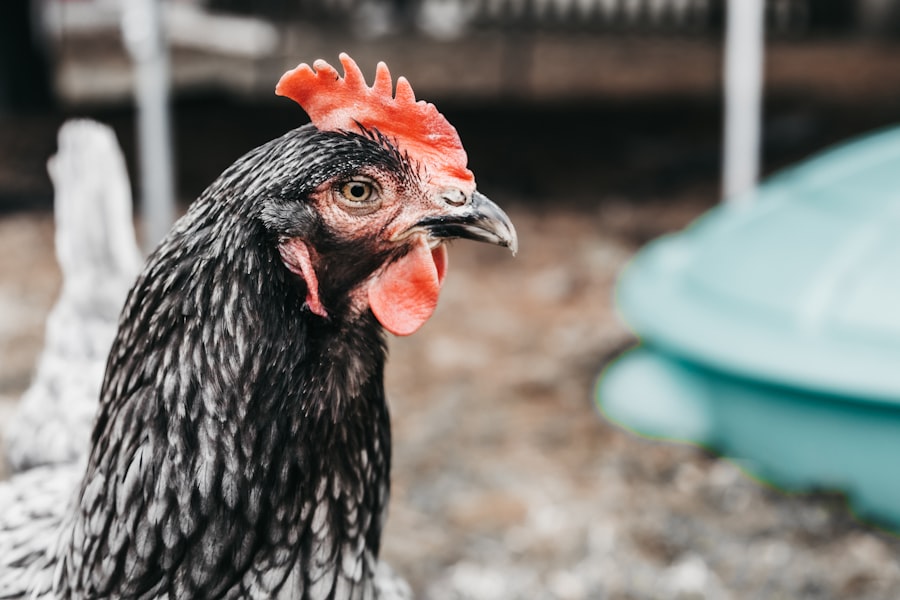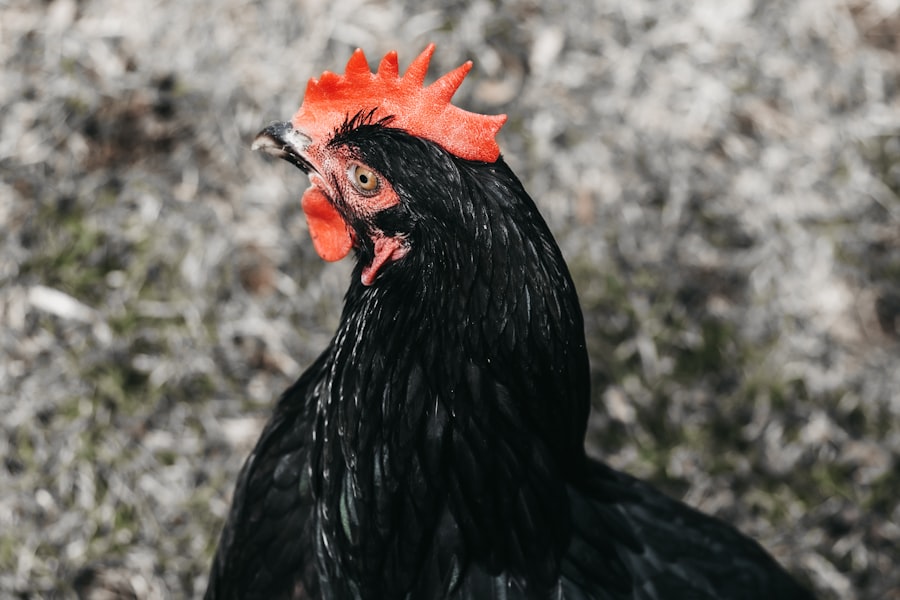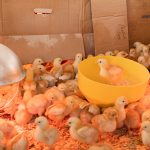Chickens are social creatures that benefit from a structured environment. They establish a hierarchical system known as the pecking order, where dominant individuals assert authority over subordinates. This behavior is essential to consider when designing coops and run areas.
Adequate space is necessary to allow chickens to establish their hierarchy without overcrowding, which can lead to aggressive behavior and stress. Chickens are naturally inquisitive and enjoy exploring their surroundings. Providing enrichment activities such as perches, dust baths, and foraging areas can help maintain mental stimulation and prevent behavioral issues related to boredom.
Chickens possess specific instincts related to nesting and roosting. They prefer to lay eggs in quiet, secluded locations, making well-placed nesting boxes important for encouraging this natural behavior. Roosting is another crucial aspect of chicken behavior, as they instinctively sleep off the ground to avoid potential predators.
Understanding these natural behaviors is key to creating a coop and run area that meets chickens’ needs and promotes their overall well-being.
Table of Contents
- 1 Creating a dry and well-drained coop area
- 2 Providing elevated roosting and nesting areas
- 3 Using barriers and fencing to redirect chicken movement
- 4 Implementing regular maintenance and cleaning routines
- 5 Offering alternative ground cover and foraging areas
- 6 Utilizing supplemental feeding and watering techniques
- 7 FAQs
- 7.1 What are the reasons for keeping chickens out of mud?
- 7.2 How can I keep chickens out of mud in their coop?
- 7.3 What can I do to prevent chickens from creating muddy areas in their outdoor run?
- 7.4 Are there any specific chicken breeds that are better suited for muddy conditions?
- 7.5 What are some additional tips for keeping chickens out of mud?
Key Takeaways
- Chickens have natural behaviors such as scratching, dust bathing, and foraging that should be understood and accommodated in their living environment.
- A dry and well-drained coop area is essential to prevent health issues and discomfort for the chickens.
- Elevated roosting and nesting areas provide chickens with a sense of security and help keep them safe from predators.
- Barriers and fencing can be used to redirect chicken movement and protect them from potential dangers.
- Regular maintenance and cleaning routines are crucial for keeping the coop hygienic and the chickens healthy.
Creating a dry and well-drained coop area
Choosing the Right Location
One of the most critical aspects of creating a healthy coop environment is ensuring that the area is dry and well-drained. Wet and damp conditions can lead to a host of issues, including respiratory problems, foot infections, and an increased risk of parasites. To achieve this, it’s essential to choose a location for the coop that is elevated and away from low-lying areas that may collect water.
Improving Drainage and Ventilation
Additionally, using proper flooring materials such as gravel or sand can help improve drainage and prevent moisture buildup. Proper ventilation is also crucial for maintaining a dry coop area. Good airflow can help reduce humidity levels and prevent the buildup of moisture from chicken droppings and respiration.
Designing for Air Circulation
This can be achieved through the use of windows, vents, and proper coop design that allows for air circulation. By creating a dry and well-drained coop area, you can help prevent a range of health issues and provide a comfortable living environment for your chickens.
Providing elevated roosting and nesting areas

Chickens have a natural instinct to roost off the ground, as it helps them feel safe from potential predators. Providing elevated roosting areas in the coop can help fulfill this instinct and promote better sleep quality for the chickens. Roosts should be placed higher than the nesting boxes to prevent chickens from sleeping in the nesting areas, which can lead to dirty eggs and unsanitary conditions.
Nesting areas should also be designed with the chickens’ natural instincts in mind. They prefer quiet, dark, and secluded spaces for laying eggs, so providing well-placed nesting boxes with ample bedding material can help encourage this behavior. It’s important to provide enough nesting boxes to prevent competition among the hens and ensure that each bird has a comfortable place to lay their eggs.
By providing elevated roosting and nesting areas, you can help create a coop environment that meets the chickens’ natural instincts and promotes their overall well-being.
Using barriers and fencing to redirect chicken movement
Chickens are naturally curious and can be prone to wandering into areas where they shouldn’t be. Using barriers and fencing to redirect their movement can help keep them safe and prevent damage to gardens or other restricted areas. It’s important to use sturdy fencing materials that are tall enough to prevent chickens from flying over or squeezing through gaps.
Additionally, burying the fencing underground can help prevent predators from digging underneath and gaining access to the coop area. Creating designated pathways and enclosures within the run area can also help redirect chicken movement in a controlled manner. This can be achieved through the use of gates, fencing, or netting to create separate zones for foraging, dust bathing, and other activities.
By using barriers and fencing to redirect chicken movement, you can help create a safe and organized environment for your flock.
Implementing regular maintenance and cleaning routines
Regular maintenance and cleaning routines are essential for keeping the coop and run area in good condition. This includes removing soiled bedding, cleaning nesting boxes, and regularly scrubbing surfaces to prevent the buildup of bacteria and parasites. It’s important to use safe cleaning products that won’t harm the chickens or leave behind harmful residues.
In addition to regular cleaning, it’s important to inspect the coop for any signs of wear or damage that may compromise its structural integrity. This includes checking for loose or rotting wood, damaged roofing materials, and any potential entry points for predators. By implementing regular maintenance and cleaning routines, you can help ensure a healthy and safe living environment for your chickens.
Offering alternative ground cover and foraging areas

Benefits of Alternative Ground Cover
This can also help prevent bare ground from becoming compacted or eroded over time.
Designated Foraging Areas
Creating designated foraging areas within the run can also help encourage natural behaviors and provide enrichment for the chickens. This can be achieved by scattering treats or hiding food items in different areas of the run to encourage active foraging behavior.
Creating a Dynamic Living Environment
By offering alternative ground cover and foraging areas, you can help create a more dynamic living environment for your flock.
Utilizing supplemental feeding and watering techniques
In addition to foraging for natural food sources, chickens also require supplemental feeding and watering to meet their nutritional needs. Providing access to clean water at all times is crucial for maintaining hydration and overall health. This can be achieved through the use of waterers that are easy to clean and refill, as well as regular monitoring of water quality to ensure it remains free from contaminants.
Supplemental feeding should also be provided to ensure that chickens receive a balanced diet that meets their nutritional requirements. This may include commercial feed, scratch grains, fruits, vegetables, and other treats that provide essential vitamins and minerals. It’s important to monitor feeding habits and adjust portion sizes as needed to prevent overfeeding or underfeeding.
By utilizing supplemental feeding and watering techniques, you can help ensure that your chickens receive the nutrition they need to thrive. In conclusion, understanding the behavior of chickens is crucial for creating a healthy and stimulating living environment for your flock. By providing a dry and well-drained coop area, elevated roosting and nesting areas, barriers and fencing to redirect chicken movement, regular maintenance and cleaning routines, alternative ground cover and foraging areas, as well as supplemental feeding and watering techniques, you can help promote the overall well-being of your chickens and create a harmonious living environment for both you and your feathered friends.
If you’re looking for more tips on keeping chickens happy and healthy, check out this article on PoultryWizard. They offer great advice on how to maintain a clean and dry coop to keep your chickens out of the mud.
FAQs
What are the reasons for keeping chickens out of mud?
Chickens can become sick and develop foot problems if they are constantly exposed to muddy conditions. Additionally, muddy areas can attract pests and parasites that can harm the chickens.
How can I keep chickens out of mud in their coop?
You can use materials such as gravel, sand, or wood chips to create a dry and stable surface in the coop. Regularly adding fresh bedding and maintaining good drainage can also help keep the area dry.
What can I do to prevent chickens from creating muddy areas in their outdoor run?
Providing a covered area in the outdoor run can help protect the ground from becoming muddy during rainy weather. Additionally, rotating the chickens’ access to different areas of the run can prevent excessive wear and tear on the ground.
Are there any specific chicken breeds that are better suited for muddy conditions?
Some chicken breeds, such as the Brahma and Cochin, have feathered feet that can help them navigate muddy areas more easily. However, it is still important to maintain dry and clean conditions for all chicken breeds.
What are some additional tips for keeping chickens out of mud?
Regularly cleaning and maintaining the coop and outdoor run, providing proper drainage, and using raised platforms or perches can all help prevent chickens from being constantly exposed to muddy conditions. Regularly monitoring the chickens’ health and addressing any issues promptly is also important.
Meet Walter, the feathered-friend fanatic of Florida! Nestled in the sunshine state, Walter struts through life with his feathered companions, clucking his way to happiness. With a coop that’s fancier than a five-star hotel, he’s the Don Juan of the chicken world. When he’s not teaching his hens to do the cha-cha, you’ll find him in a heated debate with his prized rooster, Sir Clucks-a-Lot. Walter’s poultry passion is no yolk; he’s the sunny-side-up guy you never knew you needed in your flock of friends!







